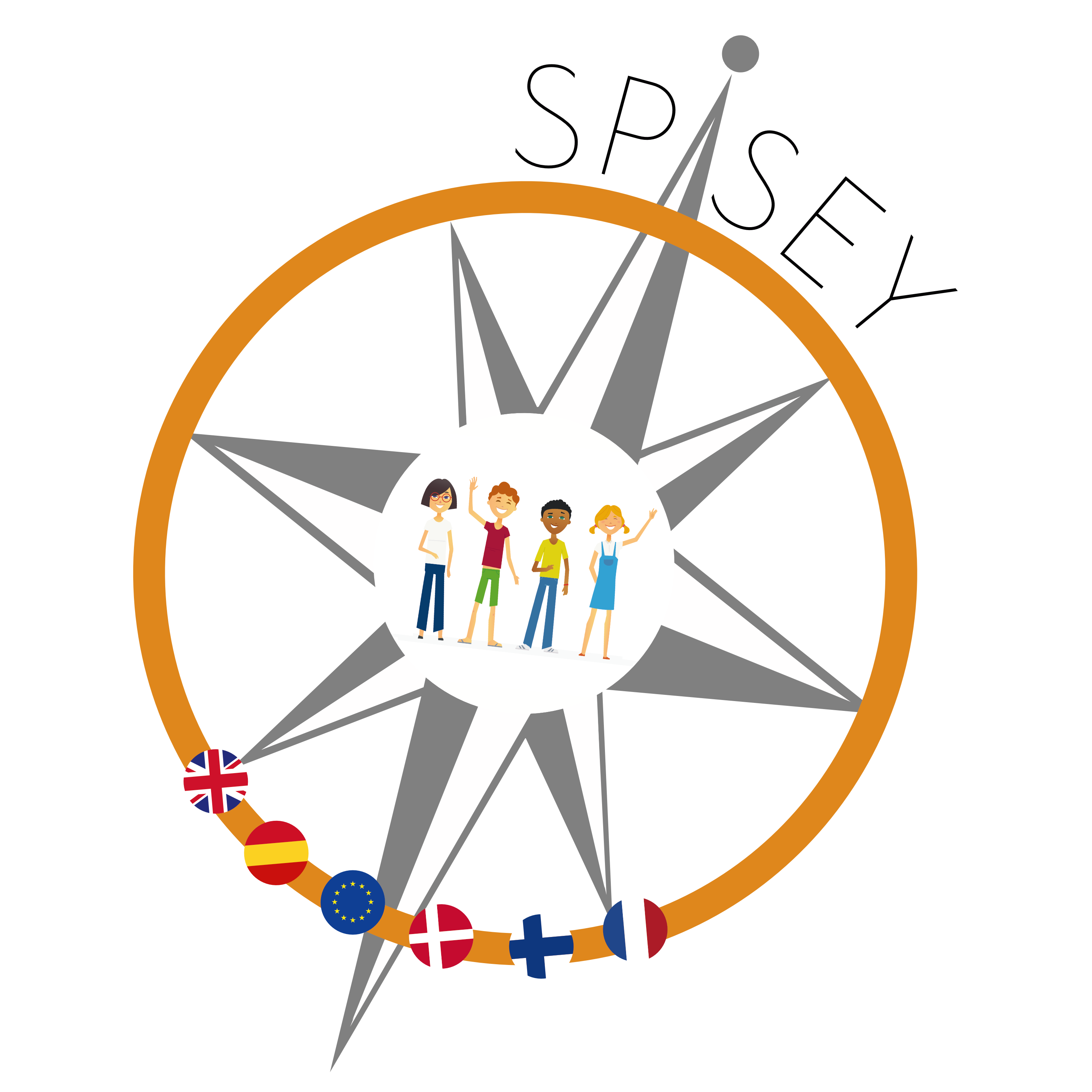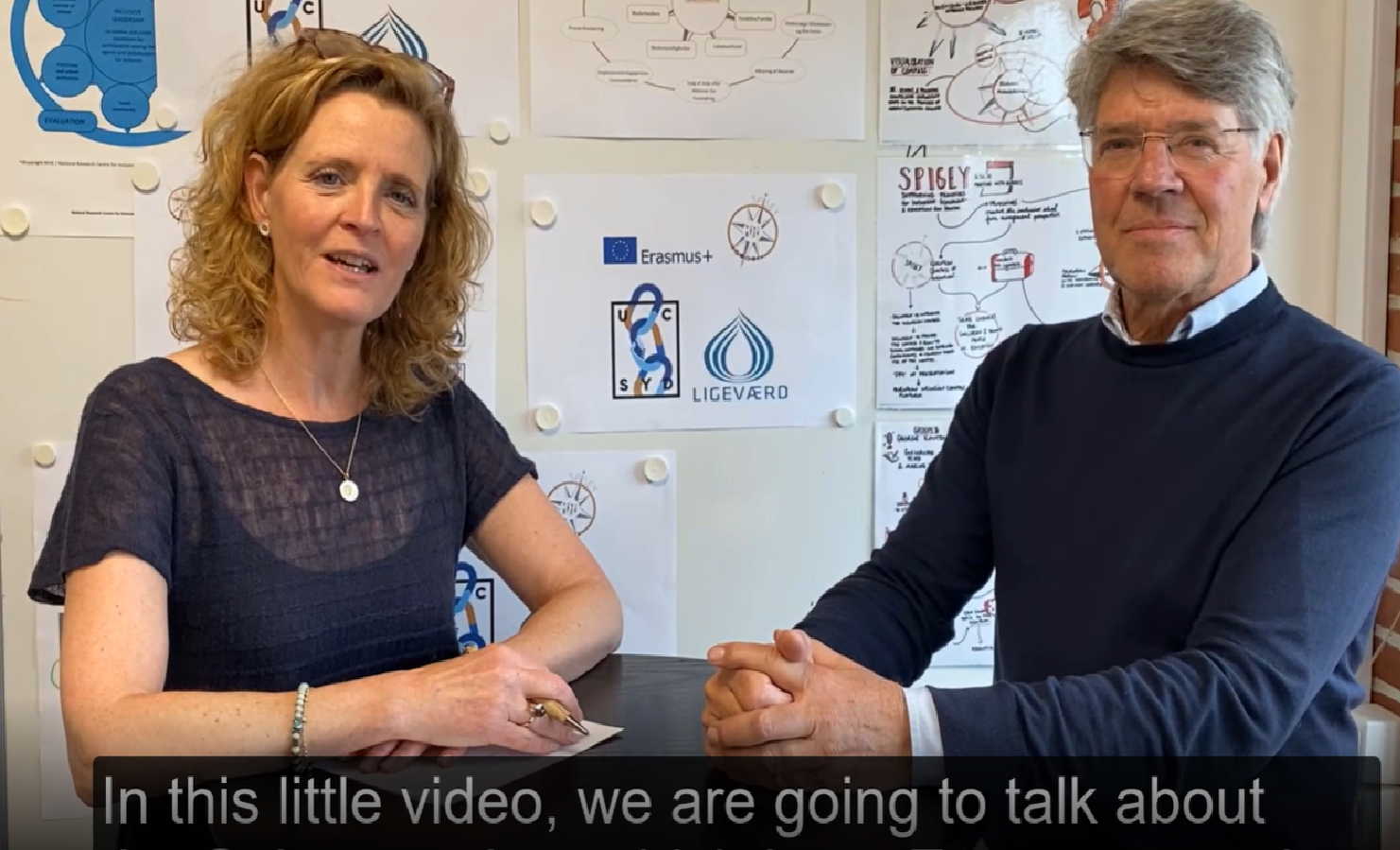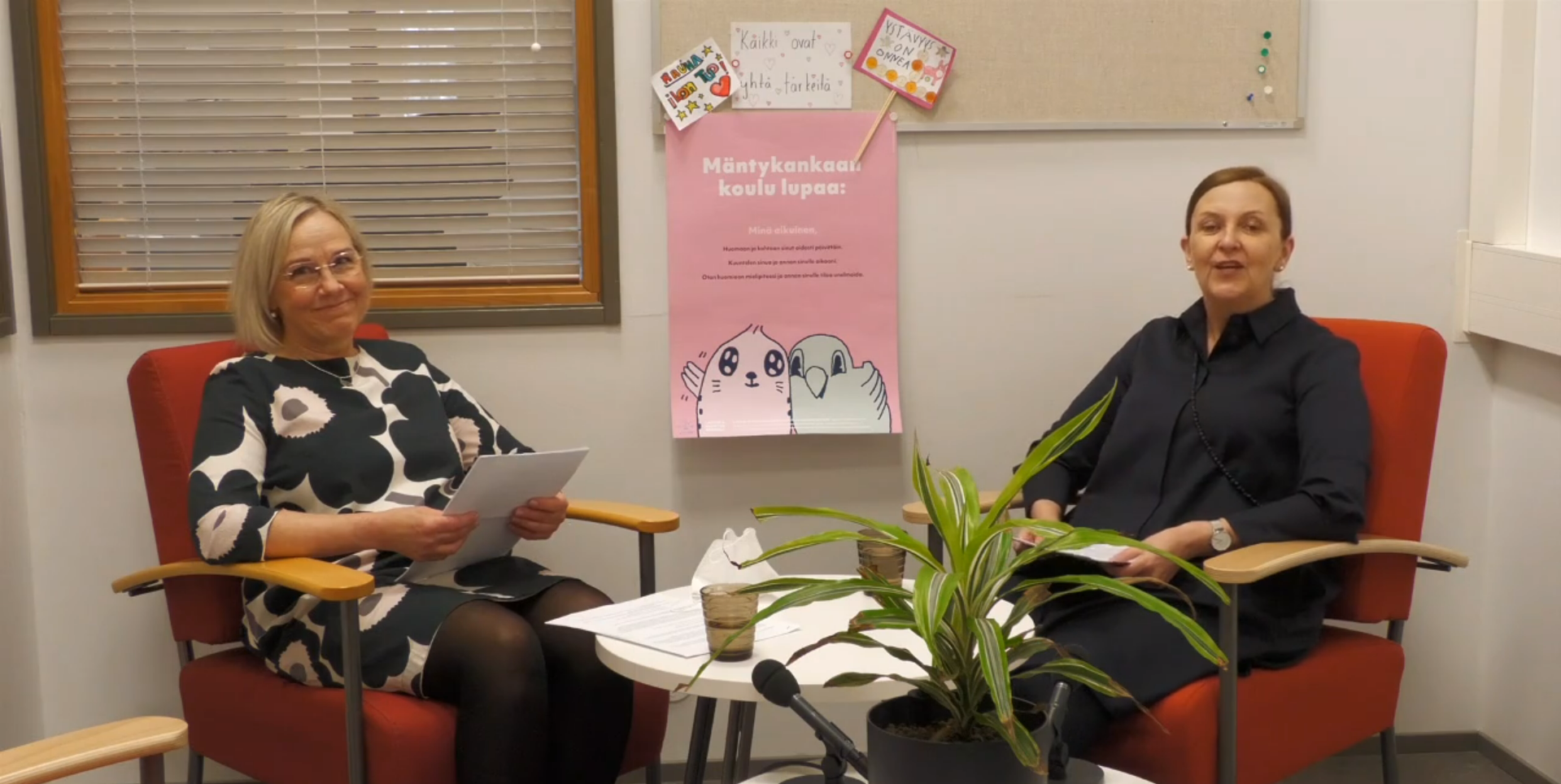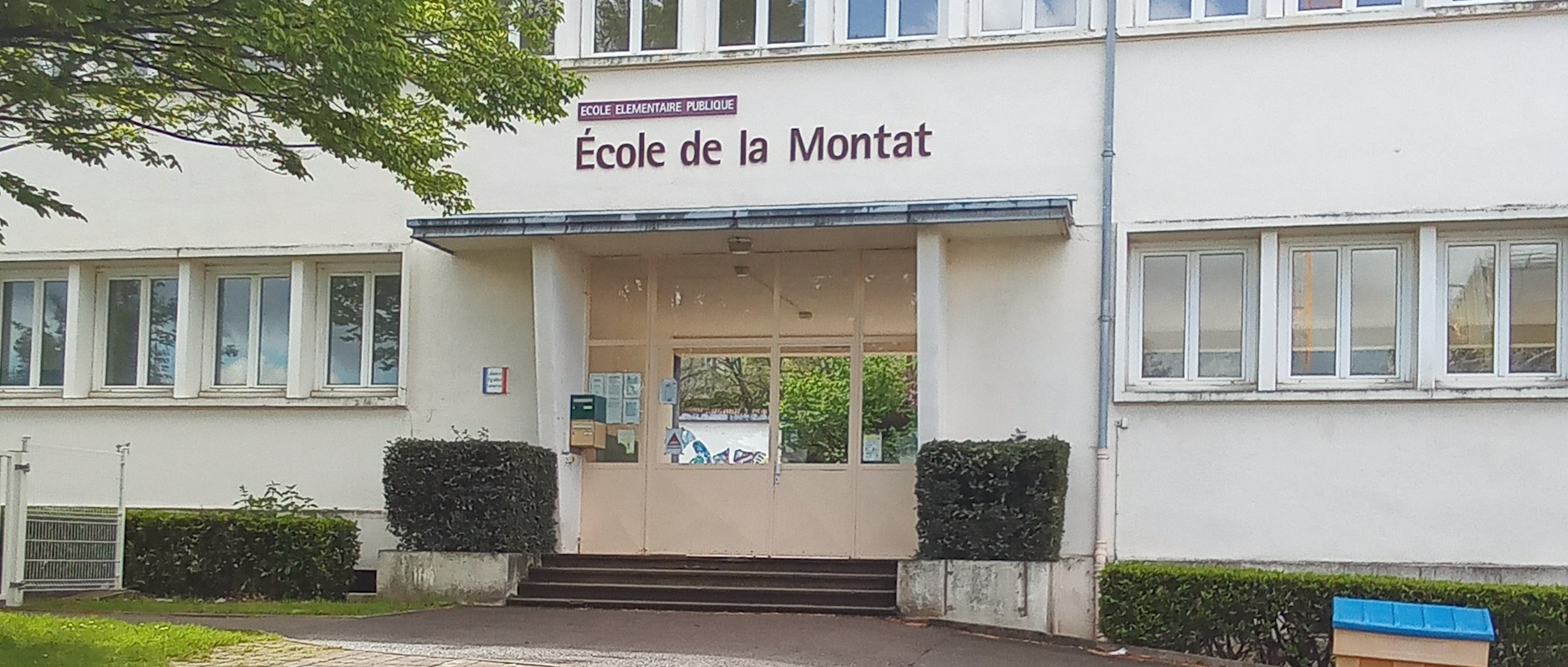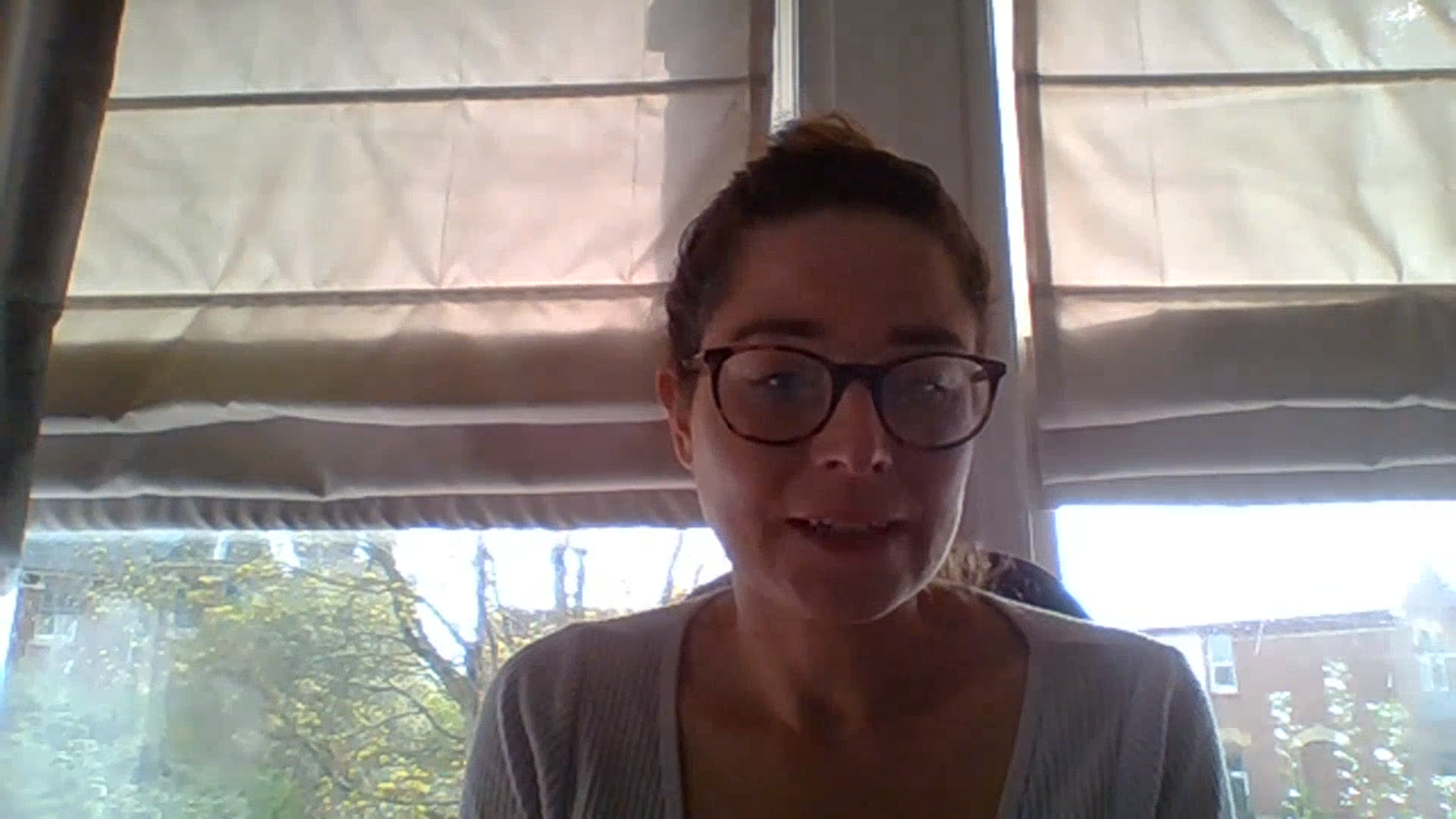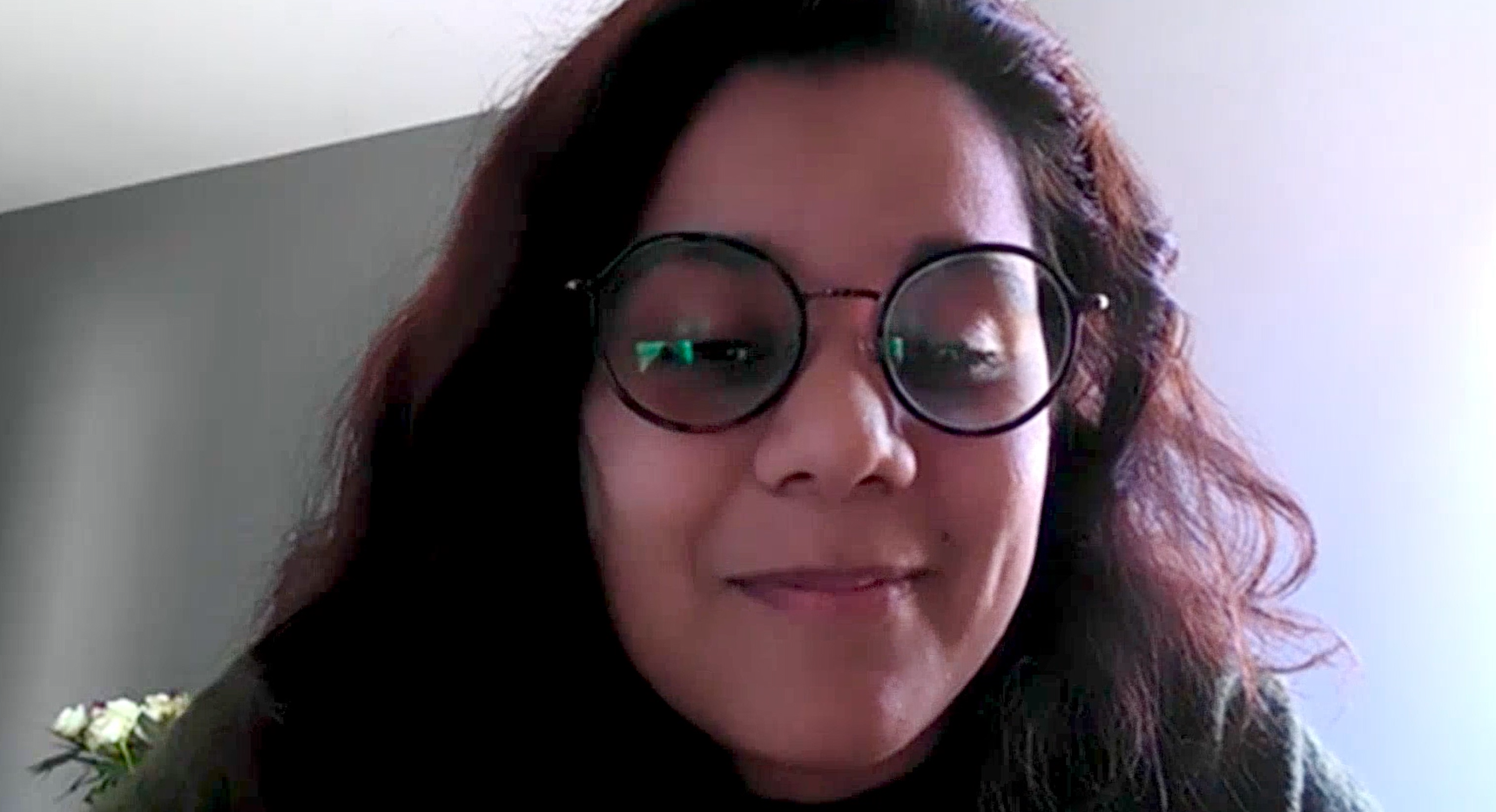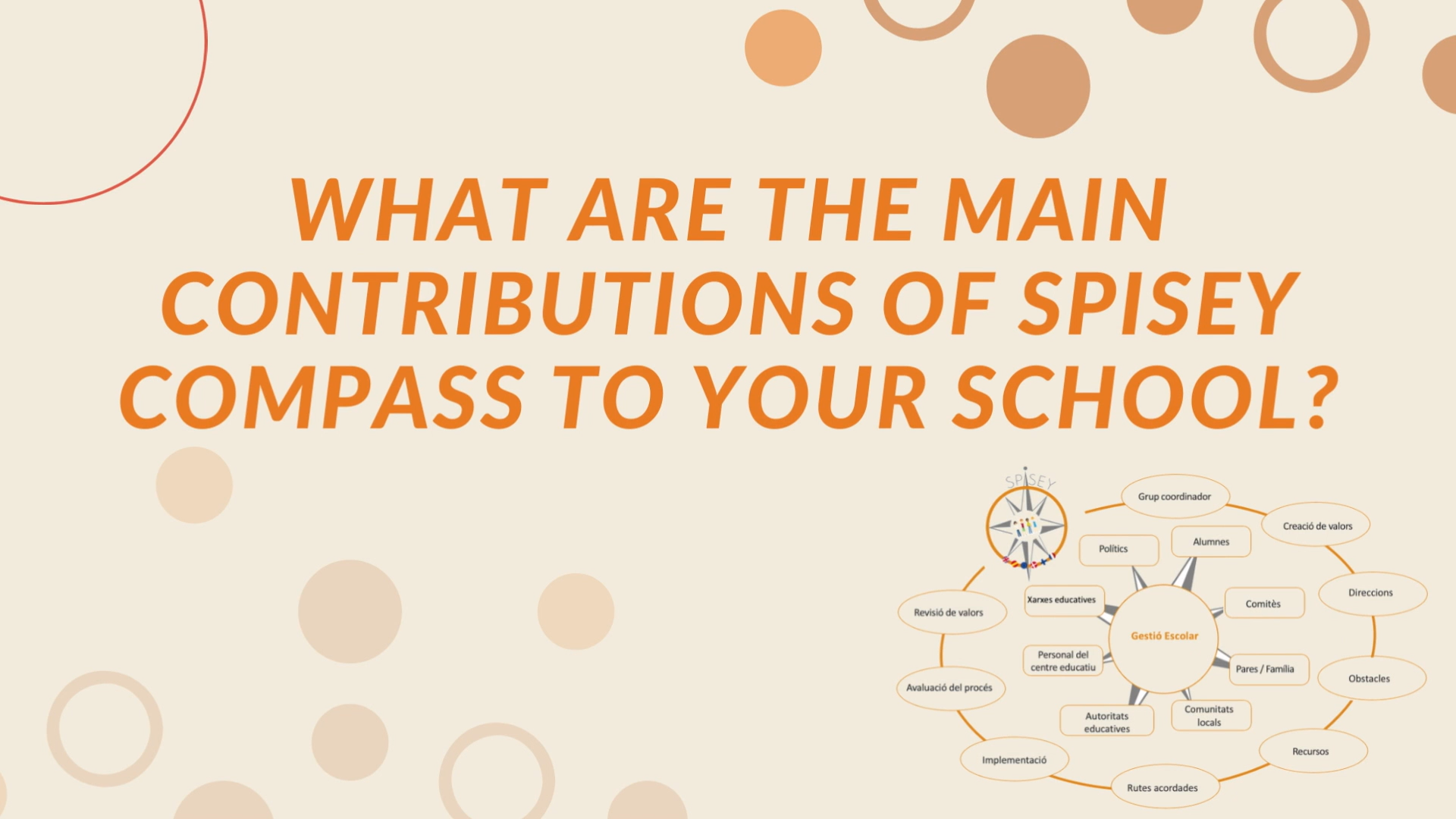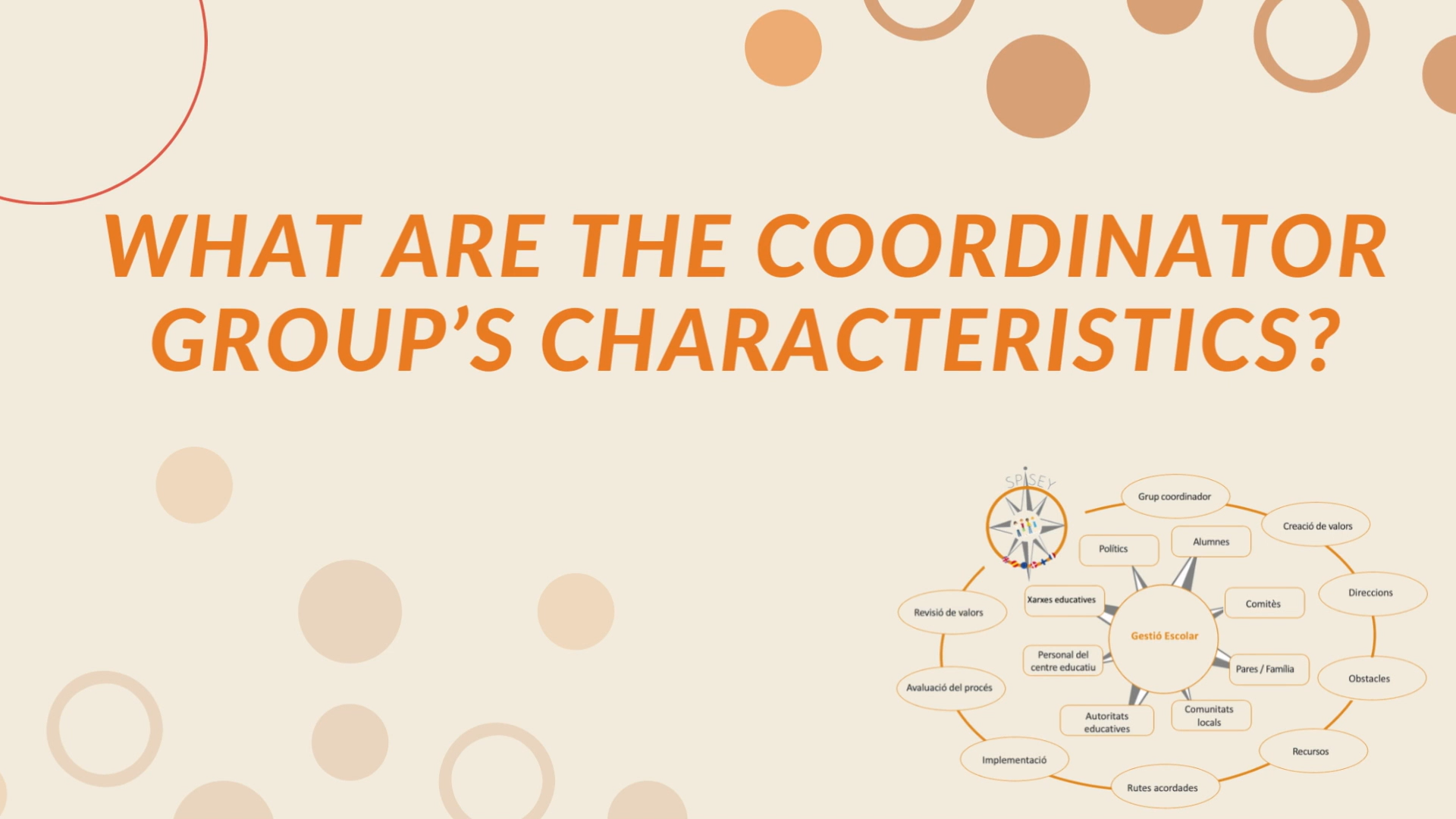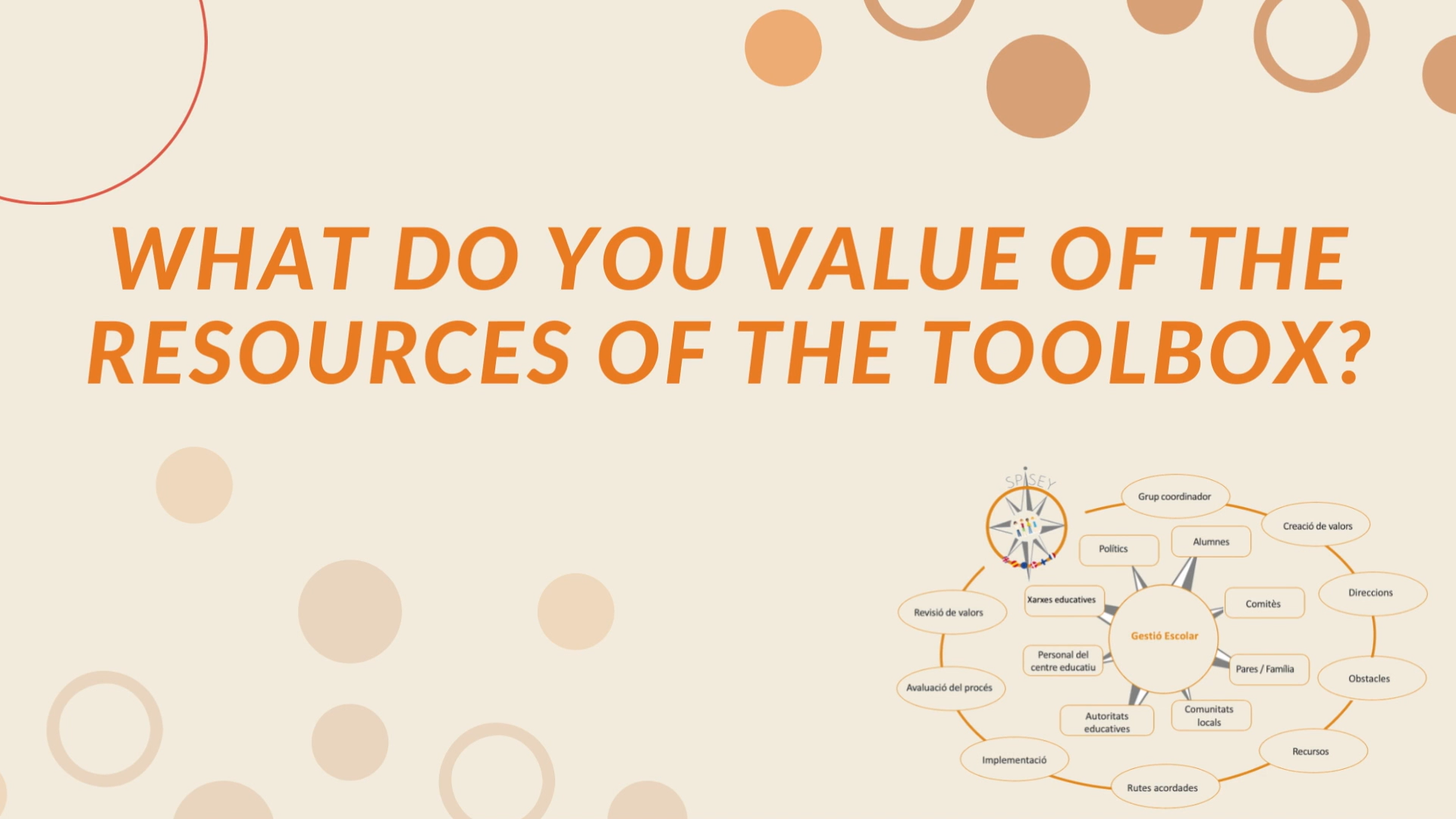
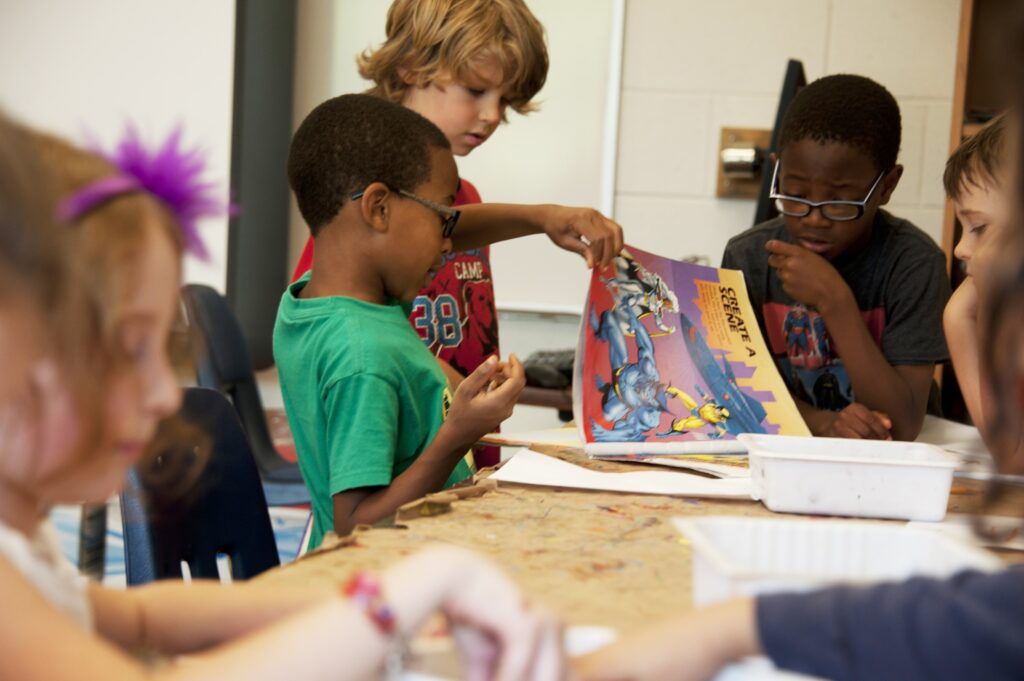

What’s in it for schools to work with the European Inclusion Compass?
You want to work actively with social inclusion in your school, but you don’t know where to start….
You know what social inclusion is about but you are looking for ways to work with it in practice…..
You have had discussions in your school about social inclusion, and you have realized that you do not have the same understanding what social inclusion actually means…..
You want to introduce inclusive practices in your school, and you know that engaging the staff is important for success, and you are looking for ways to do this……
You want to get into a better dialogue with parents so that they can play an active role in the school…..
Would you like to find inspiration to all these considerations and others alike? Then the European Inclusion Compass is definitely interesting for you.
All kinds of organizational changes and social innovation processes take time. That is a fact, but processes to change and innovate can have a greater success if you as a manager follow a structured process, engage stakeholders and facilitate the process with well described and well defined tools.
Recommendations from the SPISEY project
The recommendations from the SPISEY project are based on the piloting and testing phase of the Inclusion Compass in the different countries and the lessons learned from this process. We have identified a set of recommendations for policy makers, both on European, national and local level.
The three overarching policy recommendations that we have identified are:
- Promote the values that underpin inclusion: inclusion is based on values such as justice, respect, participation, democracy, and active citizenship.
- Ensure that inclusion policies/ developments are based on current research-informed knowledge: it is important for inclusion developments to build on knowledge produced by current research, and that there is a steady stream of funding and support for research projects on inclusion.
- Recognise that inclusion requires all relevant stakeholders to be part of the process: one of the main lessons learned from the SPISEY project was that inclusion requires active engagement of all relevant stakeholders, as captured by the Inclusion Compass.
We then identified particular recommendations at a European, national, and local school authority level:
On European level the policy recommendations are;
- More emphasis should be placed on whole school approaches: a whole-school approach involves all stakeholders (i.e., leaders, school staff, parents/carers, children/young people and the wider community) working together in partnership.
- Foster social justice, democracy, and equity in education: there should be more actions that support and enable social justice, democracy, and equity in education – for example, in the form of support for minority groups or through democratic education curricula.
- Acknowledge that inclusion is locally negotiated: one of the project findings was that inclusion was understood and translated into practice differently in different countries and institutions. This suggests that there should be space and opportunities for top-down visions of inclusion to be interpreted locally in a bottom-up way.
On national level the policy recommendations are; - Recommend and enable the creation of the role of inclusion facilitator in schools: based on our findings, we suggest the creation of the role of the inclusion facilitator in all schools to coordinate all matters about inclusion within the school community.
- Promote the creation of school boards comprised of relevant stakeholders to ensure that relevant ‘voices’ will be heard: we also suggest the creation of school boards in all European schools (if there are not already present) to ensure that the voice of all relevant stakeholders is considered in decision-making.
- Ensure student voice and participation through, e.g., student associations: consistent with the previous recommendation, we would like to emphasise the importance of including student voice in matters and decision-making about inclusion.
- Integrate theory and practice about inclusion into teacher education and school management training: knowledge about inclusion (theoretical and practical) should be an integral part of initial teacher education and professional development, so that teachers and school managers are equipped to address matters of inclusion in their classrooms and school community
On local level the policy recommendations are; - Facilitate networks between schools and links to the broader community: schools are not meant to be isolated but operate as part of broader school networks and have good links to their broader community, e.g., schools can be part of community projects.
- Ensure school leadership support: school leaders are instrumental for inclusion in their school community and their stance and example reflects the ethos of the school.
- Recognise and enable the importance of time and resources: inclusion is also about material resources and time, so any educational system should have the practical means to promote actions that support and cultivate inclusion.
With regards to school managers, we identified seven steps that schools could follow to promote inclusion in their communities. These steps are part of a processes, so the one is expected to link to the other. These steps are:
Step 1. Ensure school leadership support including recognising the importance of time and resources: school leaders set the tone for inclusion in their schools and their attitude and vision is central to inclusion planning and decision-making; they should also have realistic expectations and acknowledge the importance of appropriate resourcing
Step 2. Build on existing educational structures and processes, including school boards: effective inclusion planning should build on existing school structures and processes and aim to improve them, rather than demand a radical re-organization or rethinking, which could be seen as a more long-term goal
Step 3. Set up a dedicated project team with a facilitator: setting up a dedicated team led by an inclusion facilitator could be seen as the next step in terms of inclusion action using tools such as the Inclusion Compass; the main role of the team would be to jointly coordinate discussions and action
Step 4. Develop and enhance school networks by building links between schools and the broader community: as part of work on matters of inclusion, schools ought to extend their reach by opening up to other schools (e.g., to share good practices, knowledge and expertise) and their broader communities (e.g., links to community projects).
Step 5. Promote stakeholder engagement by promoting dialogue within schools and by giving students a voice: dialogue is central to inclusion; however, this involves empowering all relevant stakeholder voices, including students
Step 6. Develop inclusive strategies by integrating theory and practice into teacher training/ professional development: teachers should be equipped with the knowledge to address matters of inclusion; this includes issues of both social and academic inclusion and can take different forms (e.g., nurture groups, Universal Design for Learning, inclusive pedagogies)
Step 7. Promote values that underpin inclusion on an everyday basis and ensure support for minority groups: finally, inclusion should be seen as a matter embedded in everyday school life and should be reflected in the school ethos/ culture, in the form of respect for all
You can read the full recommendation and good practice report here.
Using the European Inclusion Compass
The European Inclusion Compass, and the supporting Facilitation Toolbox, has been tested within the SPISEY project. In this section you can find a list of top recommendations and of good practice stories that have been gathered and described, based on experiences from the participating pilot schools from Denmark, Finland, France, Spain and the UK.
Case studies
The case studies presented a range of good practices across different country contexts. The case studies illustrated the instrumental role of school boards (Denmark), the role of leadership and more particularly of distributed leadership (Finland and Denmark), the use of the Inclusion Compass with students (Spain and the UK), the importance of involving a range of professionals (Finland), the use of the Inclusion Compass within a higher education context (UK), links between education and employment (France) – and between the Compass and school interventions (Spain) as well as community projects (France). Brief summaries of each case study organised by country are presented below.
Case study 1: It can be an insightful experience for a school board like The Youth School board to have to work with the values that are applicable or need to be adjusted. This was experienced by this school board using the Facilitation Toolbox with several interesting and important ‘A-ha’s. The board, consisting of staff and leaders of the school, also found that these overarching debates about the school’s core values were very important and that they were dealt with and implemented too infrequently.
Case study 2: The dialogue in the Preparatory Basic Education (FGU) board revealed two important points. First it became clear, that any leader will end up with problems when partaking in dialogues because any leader is a person with the overall responsibility and hence needs to take a position as an observer to avoid representing ‘the problem’ rather than the solution. Hence, a strong recommendation from this school is to engage an external facilitator. Secondly it turned out, that coming up with groundbreaking new perspectives, on what is considered everyday routine, triggers new and often productive perspectives which could be considered implemented in the school.
Case study 1: The SPISEY process within the Mäntykangas primary school, that involved both the school manager and teachers looked at 2 different challenges; namely 1) Strengthening of collaborative and inclusive professional attitudes, more discussion and collaboration and 2) Clarifying the practice of multi-professional work at the school. The joint values of child initiated, solution focused, and professionally confident community activities in school was discussed and debated during the Inclusion Compass process and the schools’ new mission as a “child friendly school” is: “I will – as an adult – notice you and encounter you genuinely. Listen to you and give you my time. Take your opinion in account and give room for your dreams”
Case study 1:
UEC PROSEC is a non-profit association independent of any political or administrative institution dedicated to serving groups at risk of social exclusion, especially the most disadvantaged, and deals with teenagers between the age of 14-16 and young adults between the age of 16-25. The EIC was applied in this organization to work on the development of new inclusion values in the school by promoting the common good, particularly among the young children and adolescents of the Historic Centre of the city of Lleida. The valuable resources and activities of SPISEY Toolbox helped to engage students in key aspects for inclusion. Teachers could work with students through structured activities: a) to reflect about inclusion, teachers and young people together; b) to agree on new inclusive values and actions; and c) to collect and evaluate inclusive actions.
Case study 2:
Sant Josep de Calassanç school is a primary public school labelled as a high complexity centre and in the SPISEY process the school had the objective to increase students’ individual and collective responsibility as a key value to enhance educational success of all students. The Inclusion Compass helped to rely more on the expertise and previous knowledge of the staff in order to promote new inclusive actions in the school. SPISEY Toolbox helped also to analyze staff strengthens as individuals as well as a group capable to engage all the different school stakeholders in big changes. Three main actions were designed and implemented to increase the engagement of all staff, students and families: 1) To improve communication with families, 2) To promote the value of individual and collective responsibility, and 3) To encourage more active and inclusive practices in the classroom.
Case study 1:
This case study is about how the Inclusion Compass was shared and discussed with over 50 students studying in the university. Inclusion was presented and discussed as both academic and social and especially the latter was described as a skill that was also associated with one’s social capital. The students acknowledged the relevance of the Inclusion Compass to matters of inclusion and they particularly liked the idea of using a ‘compass’ to debate matters of inclusion. They noted that the Inclusion Compass gave an opportunity for students and staff to build a closer relationship and share ideas on inclusion; and, that it provided the context for structured discussions and an opportunity for students to shape the ethos of the institution
Case study 2:
This case study is about how the Inclusion Compass was discussed with 10 academic and professional services staff, many leaders in various roles at the university. The staff talked about inclusion in different ways, but all thought it was an ethical obligation as well as a matter of social justice. Discussion also took place around possible tensions with the pursuit of inclusion and a drive for excellence in elite universities like those amongst the Russell Group. Pilot participants felt that the main components of the model were in place already at the university, but that the model could be useful when identifying gaps in provision. Similarly, another respondent in a new inclusion and culture role related how the Inclusion Compass was similar to the project of change management model that was currently used when planning for inclusion and wellbeing. They also felt that the Inclusion Compass could guide their practice in terms of what communities to involve when planning for inclusion
Case study 1:
Based on the analysis of needs and the meetings held beforehand, it seemed a priority to work in favour of integration, by bringing out oral skills in the students. The team proposed the creation of a course around the internship and the preparation for the future course of the student. A provisional schedule for this: make contact with economic and cultural actors to create easier access to internships for students; working with students on professional sectors to develop young people in their representation of the professional world, one (or more) workshop(s) may be offered; directing and speaking workshop “How should I present myself to look for an internship?’’ Through sessions led by a speaker around theatrical play, students will improve their oral fluency while discovering theatre in practice; project for the future work will be carried out around the link between the acquired experience of the internship and the construction of the project for the future
Case study 2:
Montat Verrerie School is a public elementary school in an industrial area of Saint-Etienne that hosts about 200 students from 3 to 11 years old. It is a high-complexity school with 32 students have diagnosed cognitive disabilities as the student body is extremely diverse with many allophones (students recently arrived in France who do not speak French yet). However, it does not benefit from specific financial support from the state. The school used the EIC to work with two specific challenges. The first one being to create a more welcoming and inclusive image of their school and the second one to create innovative and non-verbal and thus, more inclusive signage that are understandable for all. The application of the EIC helped to organize different creative workshops with school management, teachers and pupils, and the results of the process were a promotional video and new signage in the school yard and designs that stimulate more inclusive leisure activities in the school breaks.
